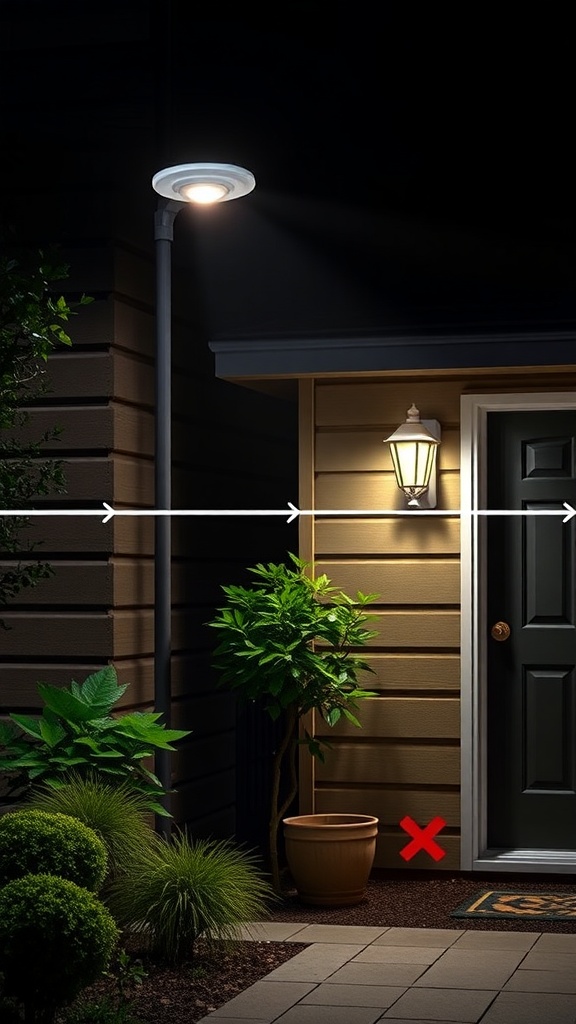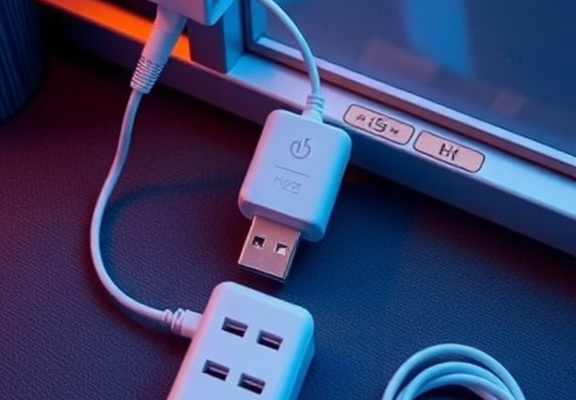✨ You’ve Discovered the Travel Gear Gold Mine
Find top-rated products to make your trip smoother—grab them before they’re gone!
🛒 Shop NowComparing Features and Benefits: Motion-Detected Nightlights vs. Motion-Activated Stick-On Lights
When it comes to illuminating your path in the dark, especially on a cruise or in tight spaces like cabins, you have two popular options: motion-detected nightlights and motion-activated stick-on lights. Each of these products has unique features and benefits, catering to different needs. Deciding which one suits you best can help enhance your experience during those evening hours. Let’s break down their features and advantages.
Thank you for reading this post, don't forget to subscribe!Motion-Detected Nightlights
Motion-detected nightlights are designed to sense movement and automatically turn on to illuminate dark areas. They offer various advantages that can be particularly beneficial in different environments.
- Convenience: These lights activate as soon as they detect motion. You can simply walk into a space without fumbling for a switch, making them perfect for nighttime use.
- Hands-Free Operation: With a motion sensor, you don’t need to manually activate anything. This is especially useful if your hands are full or you’re carrying luggage onboard a cruise.
- Energy Efficiency: Many motion-detected nightlights are designed to remain off when no movement is detected, conserving energy. This feature can reduce battery consumption or electricity usage.
- Variety of Designs: Available in various styles and brightness levels, these nightlights can seamlessly blend into your decor or serve as a decorative feature.
Motion-Activated Stick-On Lights
Motion-activated stick-on lights also light up when they sense movement, but they offer additional flexibility when it comes to placement and use. Here are some reasons why you might prefer these lights.
- Adhesive Backing: These lights come with sticky backs, allowing you to place them almost anywhere without the need for tools. This means you can attach them to walls, furniture, or even inside cabinets.
- Portability: If you travel a lot, stick-on lights can be easily transferred from one location to another. You can take them off the wall and reapply them in a new spot with ease.
- Multiple Lighting Options: Some stick-on lights come with various settings, allowing you to choose between subtle night lighting and brighter task lighting, depending on your needs.
- Rechargeable Battery Options: Many modern stick-on lights use rechargeable batteries, making them environmentally friendly and cost-effective over time.
Comparing Use Cases
Both lighting options shine in specific scenarios. However, understanding how and where you’ll use them can dictate the best choice for your needs. Here’s a quick comparison:
- For Cruise Cabins: Motion-activated stick-on lights might be preferable here. Their flexibility means you can stick them near the bed, bathroom, or closet. Plus, when you’re traveling, you can bring them along for future trips.
- In Hallways or Bathrooms: Motion-detected nightlights serve as great options in these spaces as they automatically illuminate pathways, reducing the chance of tripping over obstacles during the night.
- If You Value Aesthetic Appeal: A motion-detected nightlight may be more visually appealing, as these come in numerous stylish designs and can complement the room aesthetics perfectly.
Final Thoughts
Ultimately, the decision between motion-detected nightlights and motion-activated stick-on lights depends on your specific needs and environment. If you seek a more permanent installation that aligns with your home decor, then motion-detected nightlights may win out. However, if flexibility, easy installation, and portability are what you value, the stick-on lights could be your best bet. Consider your unique situation, and choose the lighting option that enhances your lifestyle, making your cruise or home life more comfortable and safe.
Both motion-detected nightlights and motion-activated stick-on lights offer exceptional benefits. The best choice aligns with your individual preferences and the specific settings where you plan to use them.
Choosing the Right Cruise Light: Practical Tips for Travelers
Traveling on a cruise is an exciting adventure. However, nighttime activities or simple trips to the restroom can become tricky in a dark cabin. That’s where choosing the right cruise lighting comes into play. By selecting the ideal light for your needs, you can ensure safety and convenience throughout your trip.
When deciding on your cruise light options, two popular choices stand out: motion-detected nightlights and motion-activated stick-on lights. Each type has its unique benefits and may suit different traveler needs. Let’s explore how you can determine which one is best for you.
Understanding Motion-Detected Nightlights
Motion-detected nightlights are designed to turn on automatically when they sense movement. This feature makes them perfect for those who may need to get up during the night without fumbling for a switch. Here are some advantages:
- Automatic Illumination: As soon as you step out of bed, the light turns on, providing immediate visibility.
- Energy-Efficient: These lights usually consume less power since they are only activated when needed.
- Easy Installation: Most motion-detected nightlights plug directly into a wall socket. No tools are required!
However, they do have a few disadvantages. For instance, in some cruise cabins, an outlet may not be conveniently located where you need the light. Plus, if your movement is limited—for example, if you’re asleep and need to get up—the light may not activate.
Exploring Motion-Activated Stick-On Lights
On the other hand, motion-activated stick-on lights are incredibly versatile. They come with adhesive backs that allow them to stick anywhere—walls, nightstands, or bathroom mirrors. Here are their standout features:
- Location Freedom: You can place them wherever you find them most useful, giving you greater flexibility in lighting your space.
- Battery Operated: Most stick-on lights run on batteries, so you won’t have to rely on an outlet.
- Versatile Design: They come in various styles, such as sleek modern designs to classic looks—perfect for your decor!
Yet, they can require occasional battery changes, which may be inconvenient during your cruise. Plus, if they aren’t mounted properly or if the adhesive wears off, you might find them falling off during use.
Comparative Analysis: Which Light Prevails?
When it comes to selecting the right light for your cruise, it’s essential to consider your personal needs. Here’s a quick comparison to help you decide:
- Setup: Motion-detected nightlights require an outlet, while motion-activated stick-on lights can be placed anywhere and do not need to be plugged in.
- Projecting Light: Motion-detected nightlights often have a wider beam for illuminating larger areas compared to stick-on lights.
- Convenience: If you prefer a light that activates by movement, a motion-detected nightlight is superior. If you want complete control over placement, stick-on lights are better.
- Maintenance: Motion-detected light requires no battery replacements, while stick-on lights may need periodic battery changes.
Practical Tips for Your Choice
Here are a few practical tips to help you choose the right light:
- Think About Your Cabin Layout: Assess the layout of your cabin. Are outlets plentiful? If not, stick-on lights may be more suitable.
- Gauge Your Needs: Will you be moving around a lot at night, or do you only need a subtle light when getting out of bed?
- Consider Other Uses: Can the light be used outside the cabin, such as on excursions or shore trips? Versatility can make your purchase worthwhile.
- Do You Have Kids or Pets?: If you’re traveling with little ones or furry friends, a light that activates automatically may save bumps and falls.
Ultimately, the choice between a motion-detected nightlight and a motion-activated stick-on light comes down to your personal preferences and lifestyle. Both options offer unique benefits, making them valuable for nighttime safety in a cruise setting. By considering your space, needs, and lifestyle, you can enjoy your cruise adventure with the perfect lighting solution!
Conclusion
When deciding between motion-detected nightlights and motion-activated stick-on lights for your cruising adventures, it’s essential to weigh the features and benefits of each option carefully. Motion-detected nightlights typically offer automatic illumination without the need for manual switching, providing convenience and ease of use. They are often more aesthetically pleasing and can fit seamlessly into a room’s decor while providing safety by illuminating pathways at night.
On the other hand, motion-activated stick-on lights bring flexibility and practicality to the table. Their adhesive backs allow you to place them wherever you need extra light, making them ideal for tight spaces or areas where drilling holes isn’t an option. They are particularly useful for illuminating closets, bathrooms, or stairways, ensuring you can navigate your cabin safely at any hour.
As a traveler, consider your specific needs before making a choice. If you value elegance and a seamless integration into your cabin’s design, a motion-detected nightlight may serve you best. However, if portability and placement options are high on your priority list, motion-activated stick-on lights could be your perfect match.
Ultimately, the right cruise light will depend on your individual preferences and travel habits. By evaluating these factors, you can ensure that your choice enhances your travel experience while providing the necessary functionality and safety during your time at sea. Select wisely, and let your cruise be as enjoyable and safe as possible with the perfect lighting solution at your fingertips.
✨ You’ve Discovered the Travel Gear Gold Mine
Find top-rated products to make your trip smoother—grab them before they’re gone!
🛒 Shop Now





